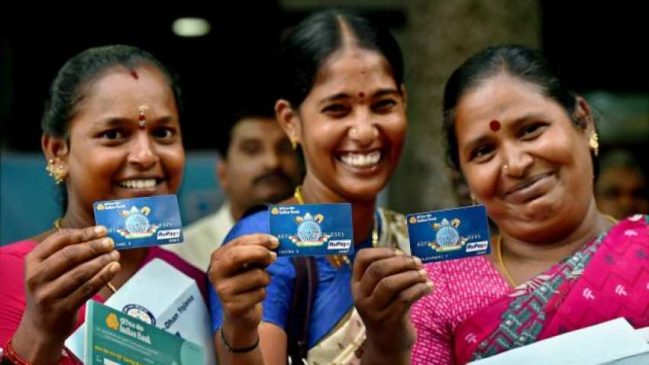The Pradhan Mantri Jan-Dhan Yojana, launched ten years ago in August, has been a pathbreaking initiative in providing banking services to unbanked adults in India. Since its inception, over 52 crore Jan-Dhan accounts have been opened, which now have a deposit balance of over Rs 2,30,000 crore.
Read More: Big Relief For Kejriwal: SC Grants Bail In Excise Policy Case But Can’t Go To CM Office, Sign Files
The government has also been providing timely, cost-effective, and adequate credit through the Pradhan Mantri Mudra Yojana, under which over Rs 29,93,000 crore in collateral-free loans of up to Rs 10 lakh to micro and small businesses have been sanctioned. These measures have reduced the share of non-institutional credit to 23 per cent by 2021-2022, according to the Economic Survey 2023-24, and are increasing investment in rural areas.
A key enabler of these schemes has been the digitalisation of the financial system, including Digital Public Infrastructure for prompt KYC, and devices such as phones, through which people can make or receive payments.
Next steps in furthering digital financial inclusion
While digital financial inclusion allows for efficiency, cost-effectiveness, and scale in delivering a wide range of financial services, it also facilitates the provision of customised financial products both efficiently and at scale. Widely available and easy-to-use Artificial Intelligence (AI) and Machine Learning (ML) tools enable the recommendation of financial products, such as loan amounts, that meet customers’ latent needs (e.g., purchasing more cattle for dairying) based on their digital transaction history. The use of AI allows for the development of predictive models that enable accurate and fair credit assessments by analysing vast amounts of traditional and alternative credit data. It also swiftly detects fraud.
Several studies in China have shown that accelerating digital financial inclusion through smartphones, internet access, and digital banking provides funding sources for entrepreneurial activities and stimulates a diversified, non-farming-related demand in rural areas. This, in turn, promotes the establishment of new enterprises both locally and elsewhere, strengthening the economic activities between regions, especially urban and rural. Digital financial inclusion can also effectively enhance the quality of economic growth, including local GDP growth, technological innovation, comprehensive development, openness to the outside world, and improvements in people’s livelihoods.
The RBI launched UPI 123Pay for feature phones as an alternative to UPI, and the NPCI introduced UPI Lite, an on-device wallet service provided by banks that allows for lower-value transactions of up to Rs 200 through the BHIM app. While digital transactions have been rising across the board, it is also observed that direct benefit transfers (DBTs) by the government, when made digitally, tend to be followed by cash withdrawals by the beneficiaries. This suggests that many still prefer cash for the convenience it affords.
Several studies in China have shown that accelerating digital financial inclusion through smartphones, internet access, and digital banking provides funding sources for entrepreneurial activities and stimulates a diversified, non-farming-related demand in rural areas. This, in turn, promotes the establishment of new enterprises both locally and elsewhere, strengthening the economic activities between regions, especially urban and rural. Digital financial inclusion can also effectively enhance the quality of economic growth, including local GDP growth, technological innovation, comprehensive development, openness to the outside world, and improvements in people’s livelihoods.
The RBI launched UPI 123Pay for feature phones as an alternative to UPI, and the NPCI introduced UPI Lite, an on-device wallet service provided by banks that allows for lower-value transactions of up to Rs 200 through the BHIM app. While digital transactions have been rising across the board, it is also observed that direct benefit transfers (DBTs) by the government, when made digitally, tend to be followed by cash withdrawals by the beneficiaries. This suggests that many still prefer cash for the convenience it affords.
‘Bank Mitras’, who deliver financial services in remote areas using digital platforms connected to the banking network, are well positioned for this kind of engagement. They typically live in the same area as the credit takers and are familiar with them. ‘Bank Mitras’ play a role in identifying borrowers, processing loan applications, and submitting them to banks, as well as creating awareness about optimal debt, loan-proceeds utilisation, and repayments.
In China, the real incomes of farmers doubled in six years, between 1978 and 1984, which spurred the demand for manufactured goods, as noted in the Economic Survey 2023-24. By deepening financial inclusion and access to credit through a model that combines ‘high-tech’ (i.e. digital) and ‘high-touch’ (i.e. human connection) approaches, India could substantially increase rural incomes and, in turn, consumption.





































